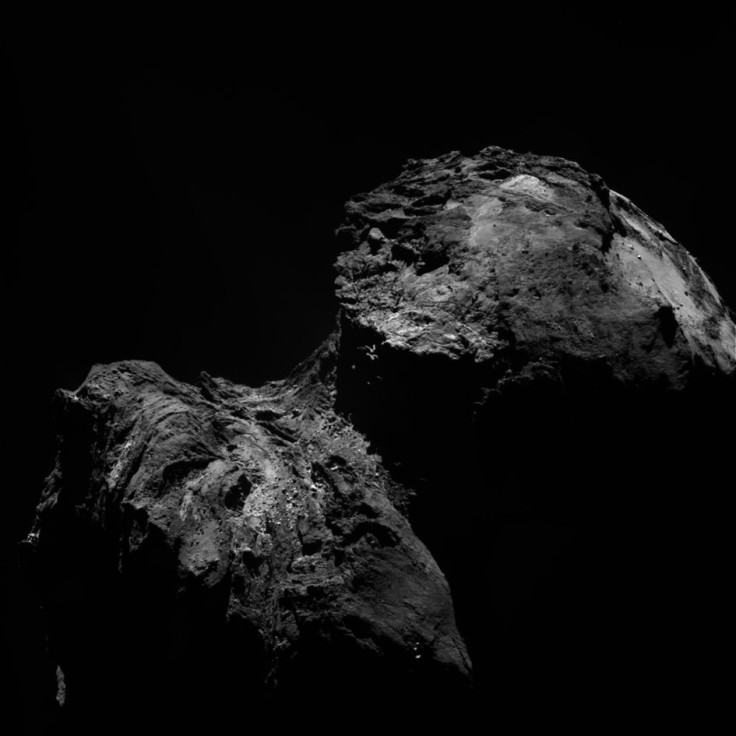Mystery of comet 67P's oxygen solved – providing new tool in search for alien life
Molecular oxygen surrounding comet 67P/Churyumov-Gerasimenko has long puzzled scientists.
It's been one of the most puzzling phenomena identified in space in recent years, but now scientists have demonstrated how comets can produce oxygen and this could help in the search for life outside of Earth.
In 2015, a team of scientists had been studying the comet 67P/Churyumov-Gerasimenko with the European Space Agency's Rosetta spacecraft. First observed in 1969, this comet belongs to the Jupiter Family comets, as its orbit is controlled by Jupiter's gravity.
Analysing the composition of its atmosphere, the scientists had identified abundant levels of molecular oxygen (O2) in comet 67P's atmosphere – suggesting for the first time that comets can produce oxygen gas.
This was an unexpected discovery. Indeed, molecular oxygen in space is highly unstable – oxygen molecules tend to pair up with hydrogen to make water, or with carbon to make carbon dioxide. Up to now, molecular oxygen had only been identified twice in space, in star-forming nebulas.
At the time, scientists had attempted to explain the phenomenon by proposing that the molecular oxygen on 67P might have thawed from its surface after having been frozen inside the comet at the time of its formation about 4.6 billion years ago.
But some scientists disagreed with this theory, highlighting that oxygen should nevertheless have reacted with other chemicals over such a long period of time.
Chemical engineering to study space
In a study now published in the journal Nature Communications, a team has come up with a new hypothesis for how molecular oxygen around 67P/Churyumov-Gerasimenko is produced.
Lead study author Konstantinos P Giapis is not an astronomer. He is a professor of chemical engineering at California Institute of Technology, who's primary interest lies in finding out new ways to fabricate microprocessors in computers. In the research, his shows how the work he has been conducting for years can shed new light on comets' oxygen mystery.
"I started to take an interest in space and was looking for places where ions would be accelerated against surfaces," Giapis said. "After looking at measurements made on Rosetta's comet, in particular regarding the energies of the water molecules hitting the comet, it all clicked. What I've been studying for years is happening right here on this comet."
Having studied throughout his career how fast-moving molecules collide with surfaces and create chemical reactions, the scientist has shown experimentally, in his lab, that similar processes might be happening on the comet 67P.

He suggests that water vapour molecules might be streaming off the comet as it is heated by the Sun. These water molecules then become ionised (or charged) by ultraviolet light from the sun before being pushed back towards the comet by solar winds.
The molecules then hit the comet's surface – which contains oxygen bound in materials such as rust and sand – and pick up oxygen atoms from these surfaces, leading to the production of molecular oxygen.
Giapis explained: "This original chemistry mechanism is based on the seldom-considered class of Eley-Rideal reactions, which occur when fast-moving molecules, water in this case, collide with surfaces and extract atoms residing there, forming new molecules. All necessary conditions for such reactions exist on comet 67P."
The study's findings may provide an interesting tool for scientists looking for life outside Earth. Indeed, it is possible that some exoplanets may be producing oxygen in a similar fashion, without having life on their surface. This may influence how researchers search for signs of life on these planets in the future.
© Copyright IBTimes 2025. All rights reserved.






















